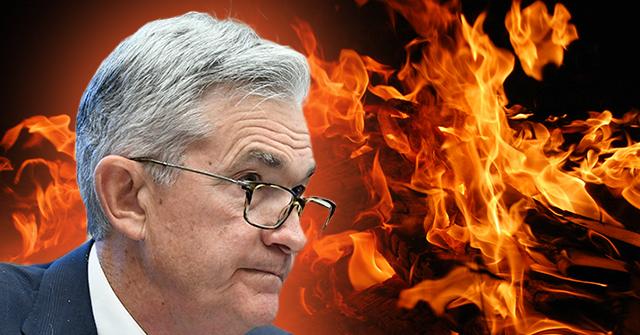The Federal Reserve’s reputation may not be burning down as rapidly as Los Angeles, but the outcome is likely to be the same: rubble, ashes, recriminations, and an expensive rebuilding.
The Department of Labor said on Friday that the U.S. economy added 257,000 jobs in December, thrashing expectations that job growth would fall to around 150,000. The report blew out the range of expectations, with economists having penciled in various forecasts from 125,000 to 200,000. None of the economists surveyed by Econoday had the unemployment rate falling—and several had it climbing—yet it ticked down to 4.1 percent.
When the Fed announced its big rate cut back in September, the first since its too-long delayed reaction to the surge of inflation that began shortly after Joe Biden took office, it argued that interest rates were too high and were unnecessarily putting jobs at risk. Fed officials claimed that the stance of monetary policy was “restrictive” and that easing would just put rates back toward neutral.
One of the key pillars of this view was the notion that real rates had risen dramatically as the nominal target remained fixed and inflation fell. This was seen as a sort of automatic tightening. The Fed thought that this would go on as inflation continued to decline unless they cut rates to keep the real rate on track with the decline of inflation. At the September meeting, they projected that unemployment would climb to 4.4 percent and stay that high through the end of 2024.
That idea lies in a smoldering ruin. The economy has added an average of 192,000 jobs per month since September, even including the dismal October report dragged down by labor strife and severe hurricane damage. The unemployment rate has gone approximately nowhere, staying at the level that the Fed now sees as the long-run tendency. And this labor market strength is continuing despite a manufacturing sector that remains in a sectoral recession, with contracting production, falling orders, and declining employment.
Defenders of the Fed’s actions have argued that this is evidence that the Fed’s cuts have worked to stave off weakness. But that would require a belief that monetary policy works almost instantaneously on the real economy, contrary to decades of evidence that Fed policy operates with long and variable lags. The better argument is that the Fed was simply wrong when it forecast a weakening labor market.
The bond market has thoroughly rejected the Fed’s view. The Fed can, of course, control the overnight, interbank reserve lending rate that it targets. The longer rate, however, is not directly controlled by Fed policy. Instead, it is a reflection of what the market sees as the likely path of future policy rates, which in turn is a reflection of what investors expect when it comes to data about inflation, unemployment, and the Fed’s reaction to that data.
If the market was persuaded that the Fed’s view was correct, longer-term yields would have declined when the Fed started cutting or at least held steady if they declined in anticipation of the Fed’s easing. Instead, the yield on the 10-year Treasury has climbed by around 110 basis points since the Fed cut in September. The federal funds futures market is essentially pricing in a close to zero chance that the Fed’s target will reach the 3.4 percent rate it forecast for the end of 2025 in September.
Even the Fed’s modified view, as seen in the December projections of a 3.9 percent fed funds target by the end of 2025, is now seen as unlikely, with the market giving it just around a one-in-three chance. The market is now implying that the Fed may be able to squeeze one more cut in this year—and perhaps will not cut again at all.
Consumer inflation expectations are surging higher, underlining the Fed’s error.
“Year-ahead inflation expectations soared from 2.8% last month to 3.3% this month,” University of Michigan economist Joanne Hsu said in the preliminary January consumer sentiment report released Friday. “The current reading is the highest since May 2024 and is above the 2.3-3.0% range seen in the two years prior to the pandemic. Long-run inflation expectations rose from 3.0% last month to 3.3% this month. This is only the third time in the last four years that long-run expectations have exhibited such a large one-month change.”
While pundits were worried that the Trump administration’s agenda posed a threat to the Fed’s independence, the real threat to the Fed was coming from inside the house. The question now is whether Jerome Powell can put out the fire in time to save his reputation and restore credibility to the institution he leads—and how disruptive to markets and the economy a Fed reversal will be.
Breitbart News
Read the full article .


